Do you remove casing from sausage?
Depending on what you are preparing, it might make sense to remove the casing from your sausages.
Link sausages are generally in either natural or synthetic casings, but not all casings are palatable or even edible.
The key is knowing which casings are and which casings are not okay to eat.
Do you remove casing from sausage?
It is not necessary to remove sausage casings, unless they are thick, fibrous kind used for summer sausages. These types of casings are generally made from cellulose and other things that are inedible. In this case, you peel the casing away to remove the sausage underneath. Natural or thin synthetic casings are fine for eating, though they don’t offer a lot of flavor.
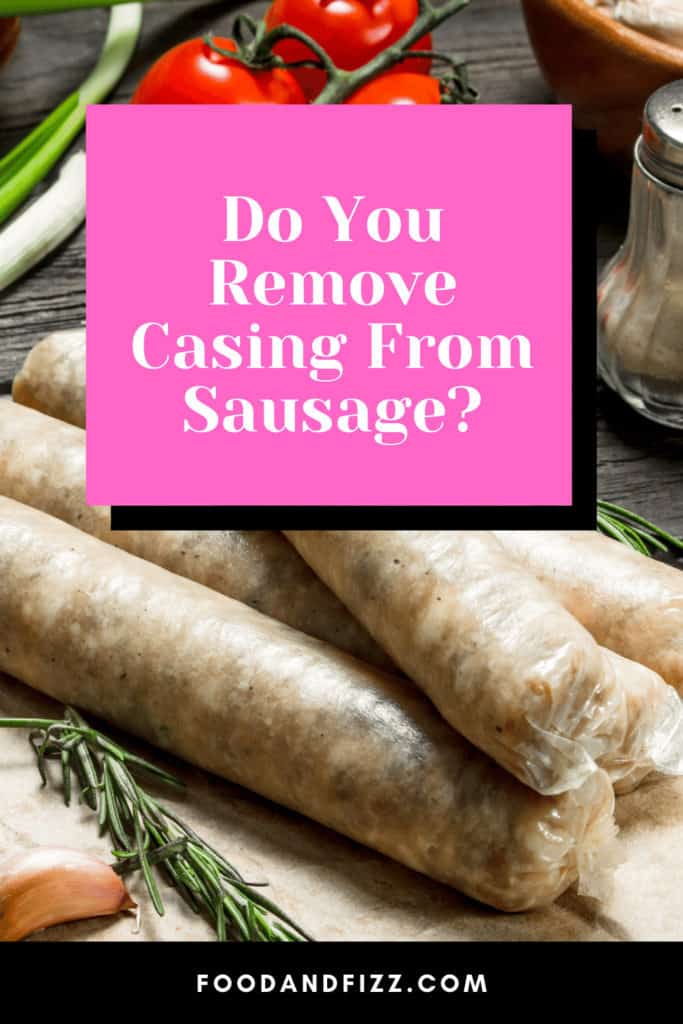
Do you remove the casing from sausage before preparing or eating it? Here is what you need to know!
Sausage Casings
When you buy or make sausage, the sausage casings are filled with ground meat, herbs, spices, and fillers.
There are different kinds of sausage casings- natural, synthetic, and alternative- that form a long tube, from which individual links are formed and twisted.
The practice originated around 4,000BC when meat was stuffed in goats’ stomachs.
Sausage making has evolved over time and there are newer options for sausage casings.

Natural Casings
The most common type of sausage casing found is probably the natural kind of casing.
These are the most traditional and are still used by many who process and produce sausage regularly.
Natural sausage casings are usually the intestine of a farm animal- pigs, cows, sheep, goats- which have been cleaned and filled with the sausage meat mixture.
Natural sausage casings are appealing to the eye, irregular in size as they are not synthetically made.
The flavor of a natural casing is going to taste better, as it becomes infused with the aroma and flavors of the sausage.
The result is a richer, more flavorful sausage, overall.
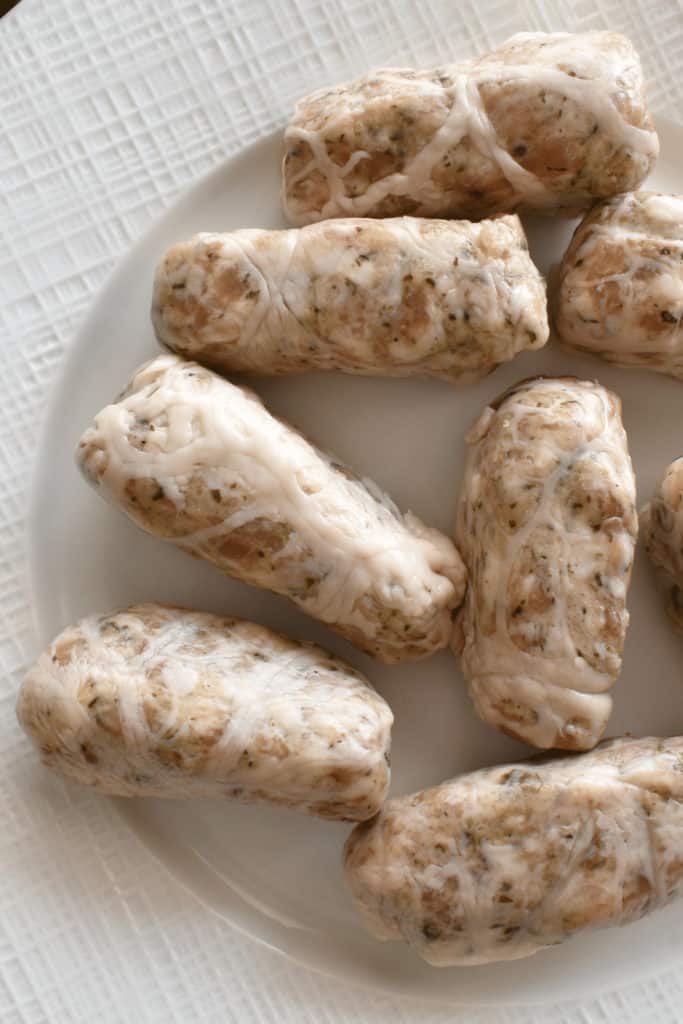
Synthetic Casings
Synthetic or artificial sausage casings often contain collagen and cellulose, though some may contain plastics or wax which deems them inedible.
Read labels carefully. Collagen is the most common of the synthetic casings and is usually made from beef and pork hides.
Collagen casings are cheaper than other options and they create a uniform sausage in both size and shape.
The casings are made to be quite strong, but also flexible enough to wrap and fill with meat.
When you use cellulose casings that also contain viscose, it is important to peel away the casing after the cooking process.
These are usually found in meats that need a long curing time and that are not smoked.
Again, the label should indicate whether the casing needs to be soaked in water before use- much like a wonton wrapper- or if you use it straight out of the package.
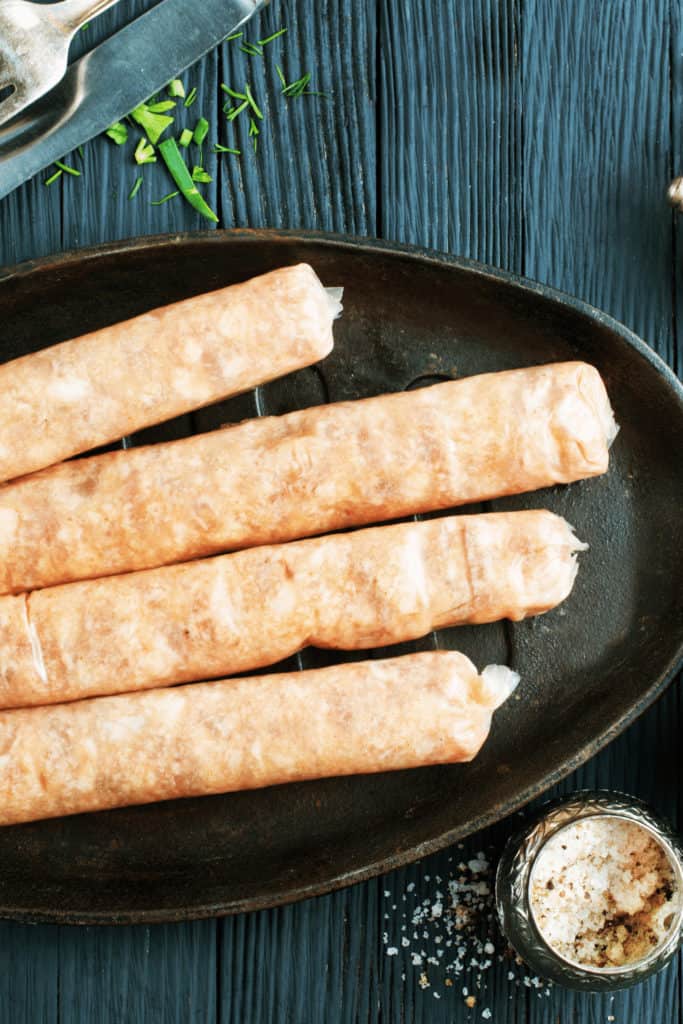
Alternative Casings
Yet more options for sausage casings are alternative varieties.
If you simply don’t have natural or synthetic casings on hand, it is still possible to make sausage links, if you wish.
Some experts suggest cutting stirps of muslin cotton fabric to form tubes that can be wrapped around the meat, and removed after cooking.
Since muslin is made from 100% cotton, it is not vulnerable to heat or moisture. Ideally, cut your strips to accommodate sausages that are about an inch and a half in diameter.
Another idea for a makeshift sausage casing is to use plastic wrap or aluminum foil.
Roll and wrap your sausage tubes, refrigerate until firm. Remove these casings before cooking.
Since you are removing the wrap prior to cooking, your sausage mixture will need binding agents to keep it together- i.e. breadcrumbs or oats.
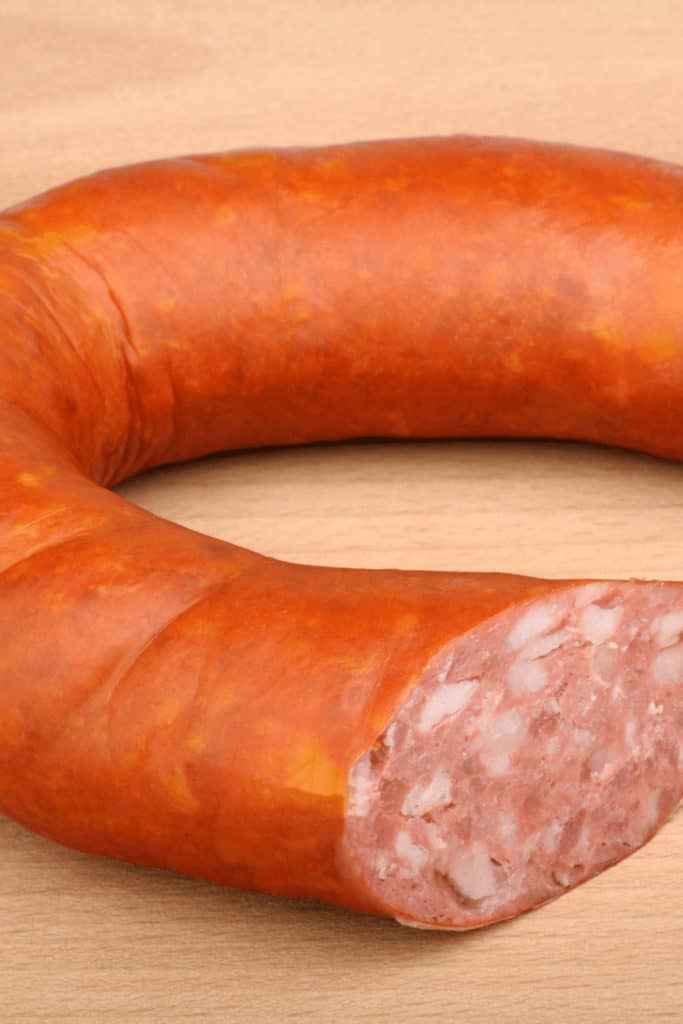
Sausage Casing Removal
If you want to remove the sausage casing before cooking, that is easy to do.
Simply snip or slice the side of the link and remove the casing with your fingers.
The meat can be cooked and treated like any other ground meat.
Cooks making a meat filling or sauce, for instance, may choose to remove the casing prior to browning the sausage meat.
If you choose to remove the casing after cooking, it may stick a bit and will require some pulling to remove from the meat.
Many people may do this simply because they find the actual casing less palatable, plus the meat will be formed and unlikely to lose its shape after the cooking process is complete.
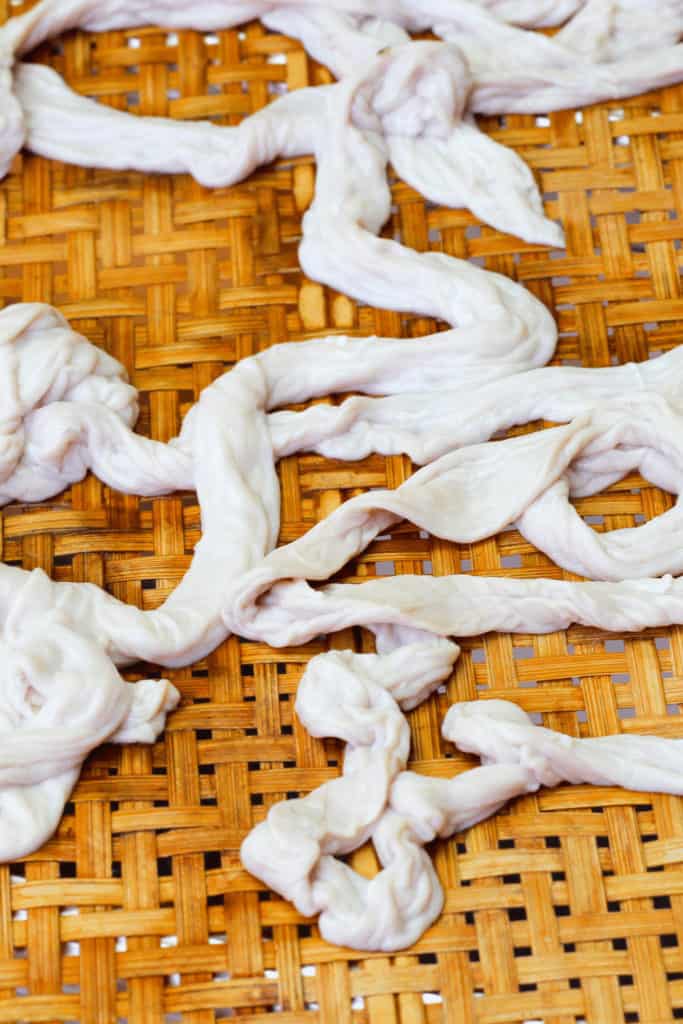
Frequently Asked Questions About Do You Remove Casing From Sausage
Can you eat summer sausage casing?
Generally, you should not eat summer sausage casings as they are thick, waxy, and can cause stomach issues. These casings would not taste palatable and would likely be difficult to chew and swallow.
What to know about collagen casings?
Collagen casings should not be used if they are dried out. Prevent this with proper storage. Keep casings in a cool place.
What Is Hog Casing Made Of?
Hog Casings are typically made from the intestine of the animal.
Are collagen casings safe to eat?
Some collagen casings are edible, such a strand collagen casing, but others are not. Thick, waxy collagen casings are not edible and can cause gastrointestinal distress.
What are the natural sources of collagen?
Collagen is naturally found in chicken, fish, and bones of animals- such as in bone broth.
Where to buy casings for homemade sausage?
You can buy a number of different kinds of Sausage Casings online- or from your favorite butcher, typically.
Conclusion About Do You Remove Casing From Sausage
You have the option of removing your sausage casings for a crumbled meat consistency, but in most instances, these casings are perfectly edible.
The only exception is the thick, waxy type of casing that are commonly found in aged products and summer sausages.
Generally, there will be a word of caution to consumers on the label regarding these inedible casings.
Use these tips to enjoy and select sausage casings, accordingly.
Whether you prefer a natural casing for your homemade sausage or if you are simply buying a package of your favorite brats, consider what you are eating and what kind of casing it contains.

